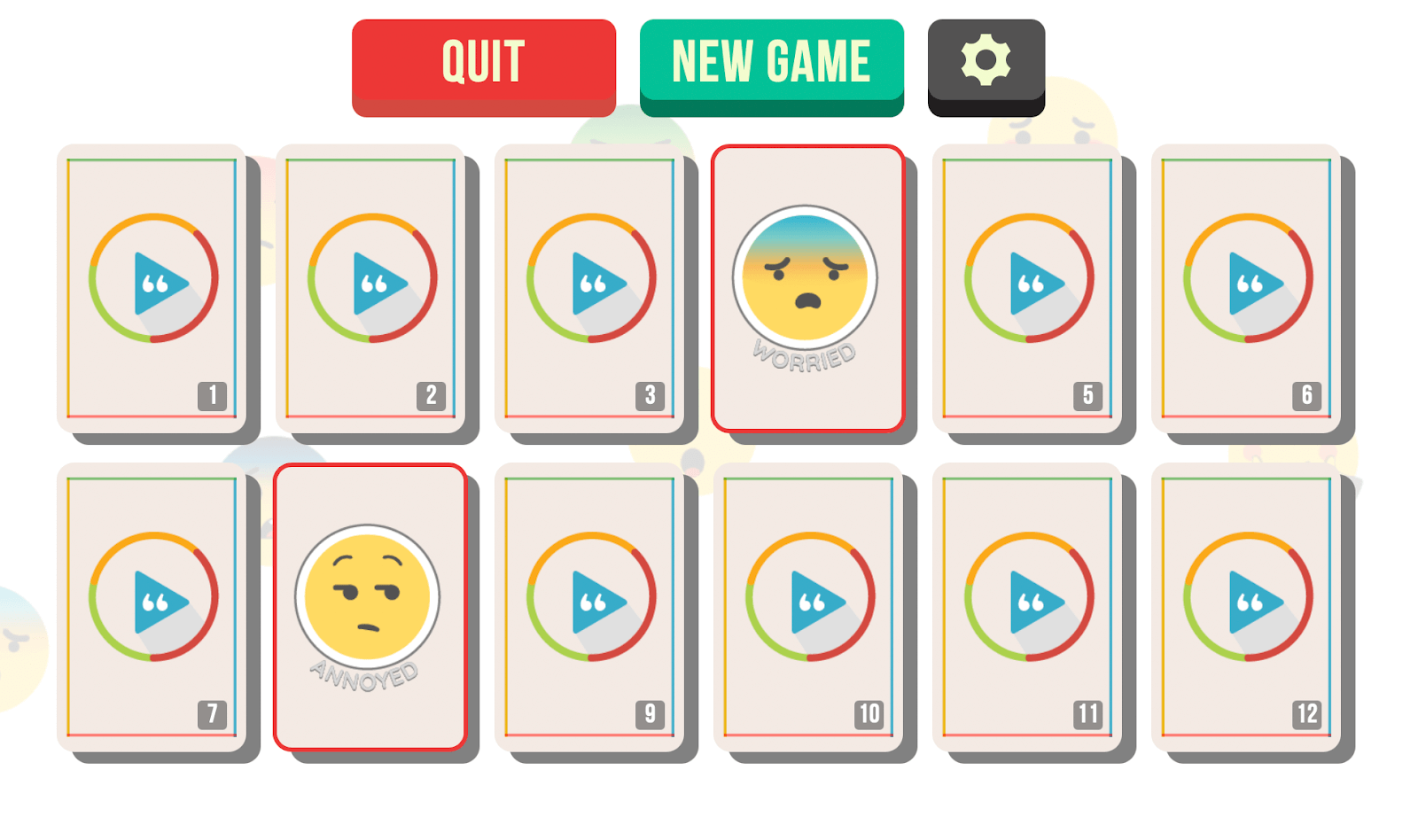No-Prep Early Elementary Lesson to Teach Emotional Recognition
Get free social skills materials
No-prep lessons on self-regulation, emotional recognition, conversation skills, and more.
Sign up hereWelcome back! This is Iris again, your local Speech-Language Pathologist (SLP). Today I am zooming in on our early-learners—think K to 2nd grade. This is my favorite crowd to teach emotional recognition to.
The key to engagement is integrating high-quality content, video modeling, and visuals (cue up Everyday Speech’s Social Communication Curriculum), alongside some tactile tools and planned movement to keep those early-learner engines running at an optimal level.
Materials I Use (from Everyday Speech’s Social Communication Curriculum)
Video: Reading Facial Expressions Introduction
- Video Companion Worksheet
- Visual Tools: SocialMojis
Game: Moji Match (Access with a free 30-day trial!)
How I Teach:
With my early-learner group, I may be targeting Individualized Education Plan (IEP) goals for emotional awareness.
Here’s an example of a goal I’ve used in the past:
“By (date), provided multimodal supports (e.g., video models, role play), (learner’s name) will use facial, body language, and vocal cues to predict how someone else is feeling in 80% of opportunities, over 2 sessions, as measured by SLP-charted data.”
To get started, I pull up Everyday Speech’s Social Communication Curriculum (SCC). Then, I navigate to the Elementary School: Starting to Identify Feelings Unit. The Reading Facial Expressions Introduction video is the third application step. This is best to use with learners who have had some exposure to basic emotion vocabulary.

This 8-minute video begins with a concept and skill preview (or review). It sets the foundation by cueing learners to use “The Big Three: Eyes, Eyebrows, and Mouth.” Are they lifted? Lowered? Can we do a body scan?

The Reading Facial Expressions video companion worksheet can be adapted for pre-readers. Use this resource to spark ideas for questions to ask your early-learners.
Another idea is to print out the companion worksheet to send home. This is an easy way to relay information to family members and promote universal shared concepts and language. This is key for quicker and more long-term gains! Even adults benefit from a shared visual. Your learners who like to doodle and write on worksheets will also appreciate this approach!
For the younger or earlier learner set, I supplement with tactile or other sensory materials (pull from what you have in your room). I find that the earlier learners remember more when they’re laughing, moving, playing, and doing!
Some materials I happen to have in my classroom (and how I use them):
- Mr. Potato Head: I hold up the eyes, eyebrows, and mouth when these terms come up in the video. Then, I pass them around for the students to hold up to their faces. You could also affix them to posters as visual cues.
- Facial feature magnets: I ask learners to move facial feature magnets around on a dedicated “How am I Feeling?” whiteboard. This serves as a daily check-in to see how learners are feeling. They can also be used to make a funny face before leaving the class or as a reward.
- WikiStix: They’re colorful and sticky! Superimpose these on top of photos to change expressions. Mix and match to lower and lift eyebrows and mouths!
- Kids magazines: I have piles of High-Five and Highlights Magazines at my house because of my own littles, but use what you have (ask your teaching staff)! We cut out isolated features, mix and match for silly faces, or make a collage of sorts (categorize by mouths, eyebrows, etc. and see the variety). Post on your walls so learners can talk about their creations another time.
- Flipbook art activity: I use loose leaf binder rings (Amazon sells them in bulk – share them and I promise you a new best teacher friend). Pre-cut some cardstock or construction paper, draw (or glue or sticker on) some eyes, eyebrows, and mouths. Flip and talk about what you see!
- Role-play: Locate an image of a target emotion in the room, imitate/act it out for others to guess based on your Big Three and Body Scan skills!
Look in your cupboards for materials of similar nature or trade a staff member on campus (my favorite way to build school site relationships, start conversations and share ideas)!
I use the Game: Moji Match at the close of sessions for a computer-based reward. Share it on your iPad or project it on a classroom overhead screen or Smart Board also (e.g., for those whole group lessons).
Key Takeaways
Everyday Speech’s Social Communication Curriculum videos and games are a no-prep solution to all the moving pieces in your clinical or school practice! As long as I take a few minutes to preview video content, gather hands-on supports, and plan to scaffold as needed, I’ve got a recipe for a fun and full session. The learners will provide the rest!
{{cta(‘df2570d0-50ab-4151-b34d-203ec1f69ab3’)}}
About the Author:
 Iris Wong joined Everyday Speech as a contributor in 2021. Over the last decade, she has been a Speech Language Pathologist in PreK-12 public schools, private practice, international schools and community health based early intervention. She currently lives in the San Francisco Bay Area with her husband, two kids and senior dog. Visit her at https://www.linkedin.com/in/iris-l-wong/
Iris Wong joined Everyday Speech as a contributor in 2021. Over the last decade, she has been a Speech Language Pathologist in PreK-12 public schools, private practice, international schools and community health based early intervention. She currently lives in the San Francisco Bay Area with her husband, two kids and senior dog. Visit her at https://www.linkedin.com/in/iris-l-wong/

